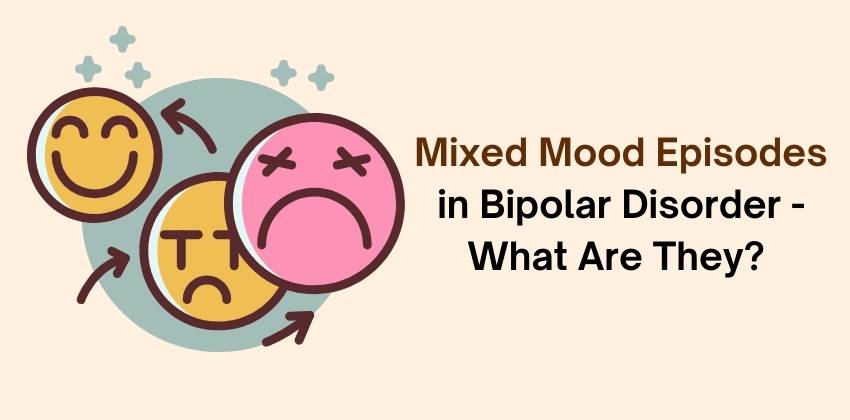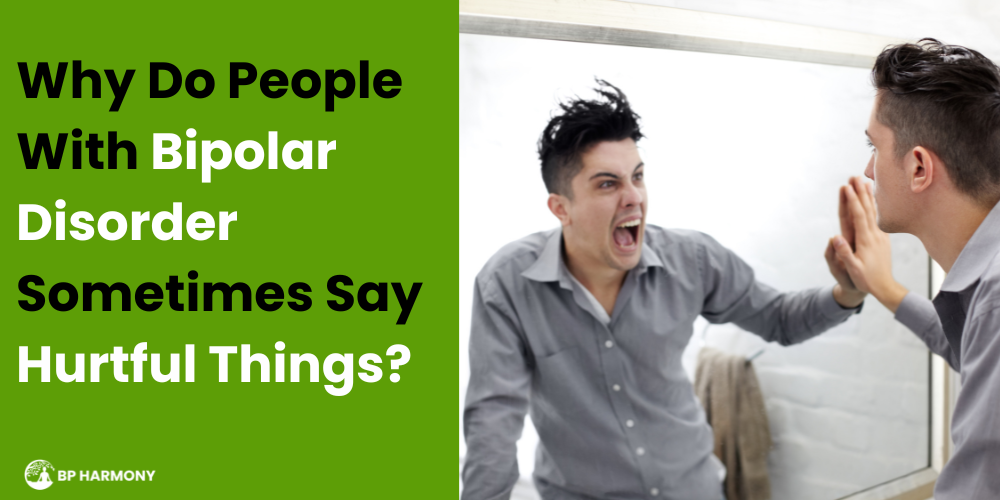Mixed Mood Episodes in Bipolar Disorder – What Are They?
Mixed Mood Episodes in Bipolar Disorder – What Are They? Disclaimer: Please talk to a licensed health professional if you suspect you are having similar symptoms described below The complexities of bipolar disorder are as nuanced as they are challenging, and few aspects of it are more perplexing than mixed mood episodes. These unique and intense states bring symptoms of both mania and depression simultaneously, creating an emotional paradox that can make life feel like a series of contradictions. One moment may be marked by an elevated mood paired with deep sadness, and in the next, high energy mixes with hopelessness. In this post, we explore the intricacies of mixed mood episodes—also called bipolar disorder with mixed features—including their symptoms, risk factors, and approaches to treatment. What Is a Mixed Mood Episode? Mixed mood episodes, also previously called “mixed states” or “mixed episodes,” are now referred to as “bipolar disorder with mixed features” in the DSM-5, the diagnostic manual used by mental health professionals. This update in terminology reflects a more refined understanding of bipolar disorder’s spectrum, recognizing that these episodes can occur in both bipolar I and bipolar II disorders. A mixed episode happens when someone experiences symptoms of both mania (or hypomania) and depression either at the same time or in rapid succession, with little or no recovery period in between. Mixed mood episodes can manifest as an intense internal conflict, where high energy coexists with sadness, or even lead to manic actions laced with depressive thoughts. These episodes are estimated to affect roughly 20-40% of people with bipolar disorder, highlighting their significant prevalence and the importance of addressing them with care. Symptoms of Mixed Mood Episodes Mixed mood episodes can vary widely in their presentation, often blending mania’s energizing elements with the despair and lethargy of depression. Common symptoms include: An unusual combination of elevated and low moods Engaging in pleasurable activities while feeling depressed Experiencing rapid, pressured speech alongside a low mood Having an elevated mood with intrusive, depressive thoughts or even suicidal ideation Poor sleep, often characterized by severe insomnia Significant changes in appetite, which can swing between loss and excess Irritability, agitation, and restlessness Feeling energized yet hopeless Racing thoughts mixed with sadness or grief These symptoms can create a volatile state, making it difficult for individuals to function in daily life. The erratic combination of mood and energy can lead to heightened risk-taking, extreme emotional swings, and significant distress. Diagnostic Criteria The DSM-5 has specific criteria for diagnosing mixed features in bipolar disorder. According to these guidelines, an individual must show: Three or more manic or hypomanic symptoms during a major depressive episode, or Three or more depressive symptoms during a manic or hypomanic episode. These criteria help mental health professionals identify mixed mood episodes more accurately. Diagnosing mixed features is complex, and the coexistence of such opposing moods can make it harder to discern the underlying bipolar disorder type, whether it’s bipolar I or bipolar II. Cyclothymic Disorder vs. Mixed Mood Episodes In our research, we found many similarities between cyclothymic disorder and mixed mood episodes and find it difficult for even health professionals to make the subtle call when deciding on the right diagnosis. Nonetheless, it is the sole prerogative of a physician to make the call. Here are some general characteristics to know the subtle differences: Cyclothymic Disorder A distinct mood disorder characterized by chronic, fluctuating mood disturbances Involves periods of hypomanic symptoms alternating with periods of depressive symptoms that do not meet full criteria for major depressive episodes Symptoms must be present for at least 2 years (1 year in children and adolescents) Considered milder than bipolar I or II disorder, but can cause significant impairment May be a precursor to developing bipolar disorder in some cases Mixed Mood States in Bipolar Disorder A specific presentation within bipolar disorder (40%), not a separate diagnosis Involves simultaneous symptoms of both mania/hypomania and depression during a single mood episode Can occur in bipolar I, bipolar II, or major depressive disorder Again, characterized by rapid shifts between manic and depressive symptoms or the presence of symptoms from both poles at the same time Often associated with more severe symptoms and greater functional impairment compared to “pure” manic or depressive episodes While both conditions involve fluctuations in mood, cyclothymic disorder is a distinct, long-term pattern of mild mood swings, whereas mixed mood states represent a specific type of episode that can occur within the context of bipolar disorder or major depression. The symptoms in cyclothymic disorder are generally less severe than those seen in mixed episodes of bipolar disorder. Conclusion Mixed mood episodes add a layer of complexity to bipolar disorder, blending high and low moods into a state that can feel overwhelming and unpredictable. These episodes remind us of the diversity of experiences within bipolar disorder and underscore the importance of personalized care and support like the one offered at BP Harmony. While the journey of managing mixed mood episodes is challenging, a combination of targeted treatments, understanding support, and self-awareness can help individuals navigate these episodes and regain stability.The path forward includes recognizing the signs, seeking specialized care, and building a support system that understands the unique needs of those affected by bipolar disorder with mixed features.



